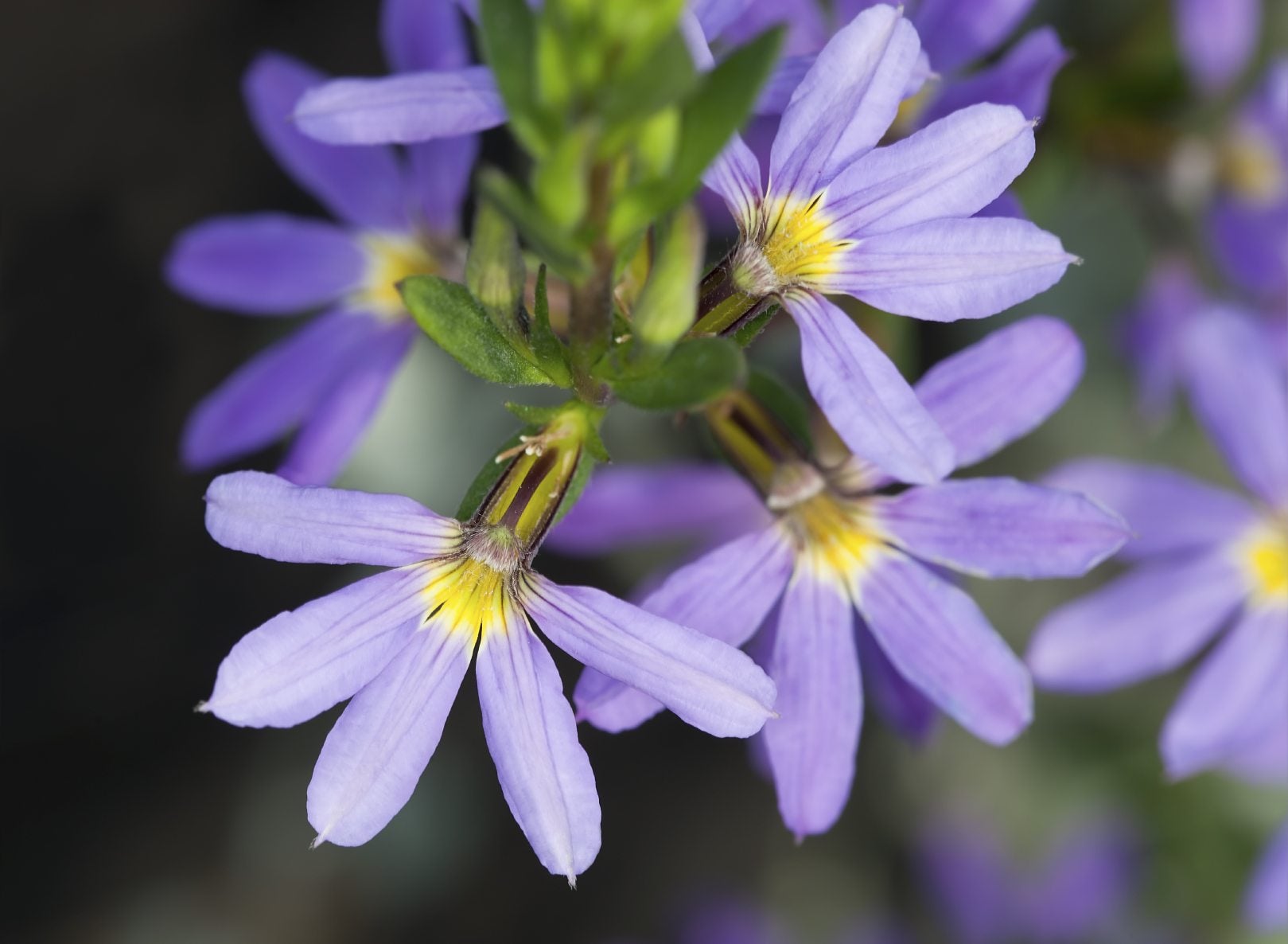Fan Flower Plants: Growing And Caring For Fan Flowers


Half a flower is better than no flower at all. In the case of Scaevola fan flower plants, it is not only better but excellent. These Aussie natives produce pretty blossoms that look like part of a rayed flower has been cut off of the bloom. Growing fan flowers requires warm, sunny conditions and good drainage and aeration. They can tolerate brief periods of drought but tend to produce fewer blooms in humid regions. We have some tips on how to grow fairy fan flowers, another name for the plant, which will assure you success with these Down Under dainties.
Scaevola Fan Flower Info
Known botanically as Scaevola aemula, fan flower is in the Goodeniaceae family. These are mostly herb and shrub plants native to Australia and New Guinea. The plant’s Latin name means ‘left-handed,’ referring to the one-sided nature of the blooms. They are hardy, tolerant plants that are suitable for containers, hanging baskets, rockeries, or just dotted around the flower garden. Gardeners who seek a relatively unfussy, non-stop bloomer for many areas of the landscape should try fairy fan flowers. The plants have been extensively hybridized, providing various colors and forms for the discerning green thumb. They are perennials in United States Department of Agriculture zones 9 to 11 but must be grown as annuals elsewhere. The plants usually get only 8 to 10 inches (20-25 cm.) tall with thick stems and leaves and dentate margins. The blooms arrive all summer and are fan shaped, and most commonly blue but also come in white and pink. Fan flower plants spread out to up to 24 inches (61 cm.), making them attractive groundcovers in well-drained soil.
How to Grow Fairy Fan Flowers
The seed of most of hybrids is sterile and, therefore, not suitable for starting new plants. Even those that do produce viable seed are protected by royalty rights and must be propagated asexually. The most common method of propagation is through stem cuttings. The best soils for growing fan flowers are loose, sandy media amended with compost or organic additions. Place cuttings in sand to root and then move them to amended soil. Cuttings need to be kept moderately moist in a warm location. Avoid southern and western exposures, as these can be too bright and hot for the plant.
Caring for Fan Flowers
Scavaeola cannot tolerate freezing temperatures and will die if exposed to cold. Temperatures below 40 degrees F. (4 C.) will cause slow growth and eventually die back. Provide eight hours of sunlight per day. Water regularly but make sure the plant is in loose soil, as they do not perform well in boggy areas. Pinch back new growth if it gets leggy to force thicker plants. Remove weed competitors around in ground plants. Perennial plants benefit from fertilizer applied in spring just as new growth commences. Caring for fan flowers in northern climates may necessitate a later start outside. Wait until soil warms up to at least 60 degrees F. (15 C.) and daily lighting is bright enough. Scavaeola fan info on the internet indicates that it is an excellent plant for desert climates but grow it in winter. This will ensure the warm, but not blistering, level of heat this plant requires. With proper care and site, fan flower will delight you with its tiny blooms from late spring until the end of the summer season.
Sign up for the Gardening Know How newsletter today and receive a free copy of our e-book "How to Grow Delicious Tomatoes".

Bonnie Grant is a professional landscaper with a Certification in Urban Gardening. She has been gardening and writing for 15 years. A former professional chef, she has a passion for edible landscaping.